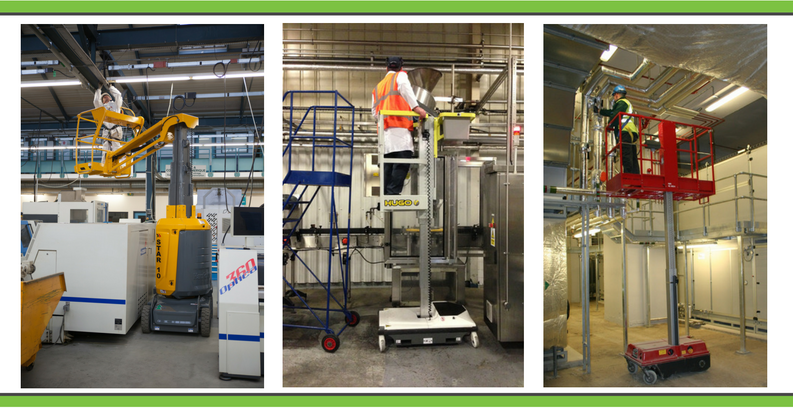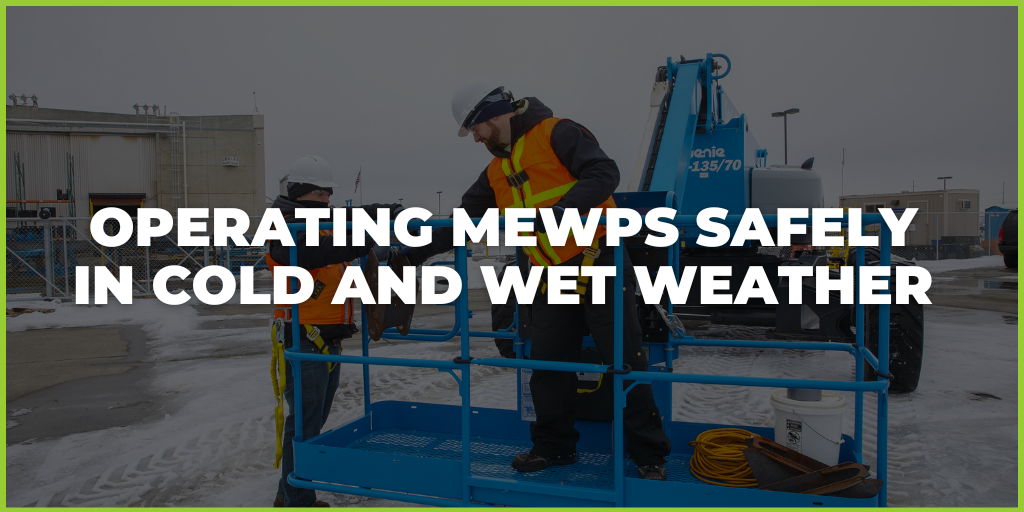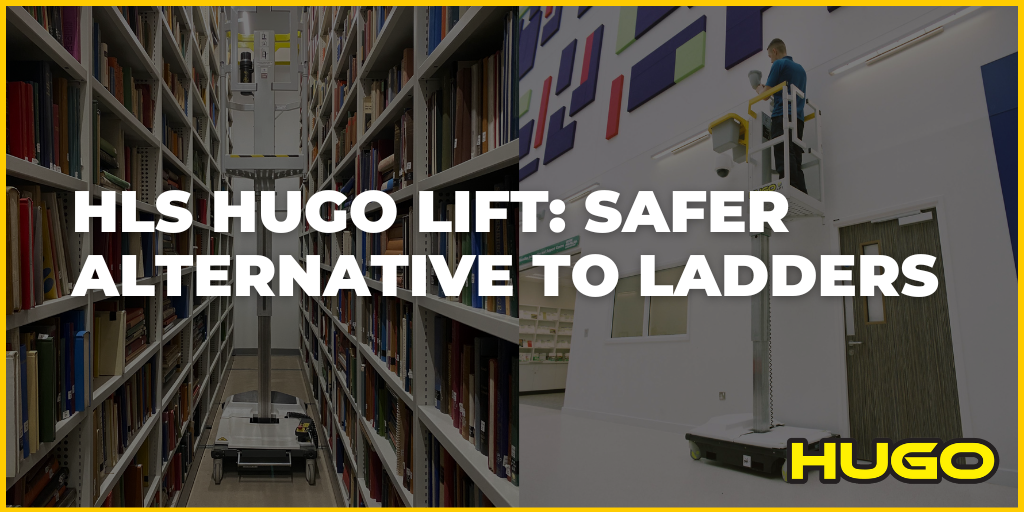"Work at height means work in any place where, if there were no precautions in place, a person could fall a distance liable to cause personal injury," HSE.
Falls from height are the second highest cause of fatal and major injuries in food manufacturing. On average food manufacturers report 750 falls to the HSE every year. 44% of these falls happen as a result of the use of ladders, scaffold towers and gantries. ('Preventing falls from height in the food and drink industries', HSE)
On many occasions when a person falls from height neither safe access nor appropriate equipment has been provided for the job. In HSE survey of 64 meat processing premises, 50% of firms admitted to not having safe means of access for all the tasks they carried out at height. Not being able to safely reach the area that you need to work in could lead to a number of health and safety risks and breaches.
Following the enforcement of the new Health and Safety and Corporate Manslaughter Guidelines, food manufacturers now face much more severe consequences for poor safety practice at their sites. The new guidelines shift from outcome-based sentencing to risk-based sentencing, meaning that even if you're lucky and injuries are minimal, you could still face a severe penalty on what might have happened. They also impose significantly higher penalties of up to £20m, have a lower threshold for imprisonment and have made it much easier to fall into the “very high” culpability category.
The major causes for working at height accidents in the food manufacturing sector include everything from overreaching due to not having the right equipment for the job, manual handling of tools, boxes and heavy objects through to slips, where the equipment used gets contaminated with food product, water, blood, lubricants or other slippery substances. More than a third of all slips, trips and falls reported to the HSE originate in the food manufacturing industries, making their prevention a key aim for the sector.
How can you ensure safety at your site?
There is a simple hierarchy of risk for managing work at height. To begin with, avoid any work at height where you can and where you can’t, or where you can’t eliminate the risks of a fall, use appropriate work equipment or other measures to prevent falls and minimise the distance and consequences of a fall should one occur.
As part of your responsibility as an employer to keep your workers safe there are a number of precautions you can take to avoid working at height accidents. To start off with you will need to:
- Identify the working at height jobs on your site and ensure that appropriate safety precautions are in place.
- Ensure that appropriate equipment is provided and is actually used.
- Effectively communicate safety procedures and risk control measures to your workforce.
- Make sure your employees are competent to use the provided equipment and that it has been correctly installed or assembled.
- Ensure that equipment is properly inspected and maintained.
- Properly plan and organize all work at height and make sure that those involved are competent and adequately trained.
Applying the hierarchy of the risk
You can apply the hierarchy of the risk mentioned above to all working at height equipment used at your site, regardless of how simple it is or how high it goes:
Steps and ladders
According to regulations ladders are not an appropriate means to access height when a task duration is longer than 30 minutes, when heavy tools or materials need to be carried up and down the ladder, or when users are likely to overreach or apply a slide-loading force.
If the need for steps and ladders cannot be eliminated, then the design should be as safe as possible. In addition to standard requirements of safety, consideration should be given to any fat, grease or other fluids that may accumulate on the equipment and impose a risk to the user’s safety.
Fixed work platforms
If you can’t eliminate the need for fixed platforms then they need to be fitted with a back rail, and if there is a fall risk with significant hazard, also a front rail at 910mm, with gaps no more than 470mm, and a toe board. In the cases when these measures can’t be taken then personal fall protection equipment, such as harnesses must be used. Platform surfaces must also be made of anti-slip grating or treated with anti-slip materials.
Rise and fall platforms
Similarly, to prevent falls from fixed work platforms, with rise and fall platforms back front and side rails must be fitted. In the cases where it’s not practical to do so appropriate personal fall protection equipment must be used by the operator.
Forklift cages:
Often forklift cages are misused and this leads to serious accidents and fatalities. Be mindful that even when a proper forklift cage is used, this often is not enough to meet working at height regulations and there are a number of restrictions that you need to be aware of to ensure compliance.
All of your working at height equipment must be examined, erected or operated by a trained competent person, regardless of whether that is a portable ladder, scaffold tower, cherry picker or a scissor lift.
Most common working at height hazards
Some of the most common working at height hazards that you need to keep an eye out for are:
Poor maintenance of access equipment:
Regular inspections of equipment before every use and thorough examinations are a must to not only ensure you’re compliant with regulations, but also provide the safest working environment for your employees.
Inappropriate use of scaffold towers:
Scaffold towers must be used only where there is a firm, level surface. Again you need to ensure a safe system of work is in place and all equipment is visually inspected before use. Those using your scaffold towers should be PASMA trained, or have received other recognised training in erecting and using towers.
Inappropriate use of ladders and stepladders:
Ladders can only be used for low-risk work and only for a short duration of time, a maximum of 30 min. They also need to be securely tied at the top and bottom or footed by a person at the base. This can make ladders an inefficient option, requiring 2 people for a job that could be completed by 1 person.
Falls from height:
Staff must not use furniture or other inappropriate means to access height and suitable equipment needs to be provided for specific jobs. Adequate signage to warn of hazards below the work area, should also be installed.
Carrying of materials:
You should not overload ladders and stepladders and where you need to carry tools or equipment you must have one free hand to grip the ladder.
Lack of training:
All staff who are involved with working at height must be properly trained and competent in everything from organization, planning and supervision to supply and maintenance of equipment.
Replacing steps and ladders
As steps and ladders are the main cause of falls from height in food manufacturing often the best option to ensure a safe working environment and provide 100% access to the areas at height at your site is to replace them with safer access equipment, such as access platforms. Access platforms can help you significantly improve safety and productivity, as well as:
- Reduce the manual handling involved in working at height, allowing boxes, tools and equipment to be carried on the platform rather than by the operator.
- Reduce the person-hours used by making tasks a one-person job.
- Offer flexible working heights suitable for employees of any height.
- Allow safe and easy cleaning and maintenance at height, providing access to all areas that need to be reached.
- Minimise the risk of slips, trips and falls, even if the platform gets contaminated by liquids, lubricants or other slippery substances.
- Compact designs make equipment easy to transport and manoeuvre around the site, easy to store and less likely to block transit routes.
Ready to take the first step?
To help you understand the specific working at height risks on your site HLS offers a comprehensive complimentary site survey. This independent and no obligation survey includes a physical review of your site with specific emphasis on the areas where you currently have challenges and where there is foreseeable risk for the future. Following the site survey, you will be provided with a full report detailing areas of concern and independent bespoke equipment recommendation based on your environment, route to work, the tasks you wish to undertake and your budget.
Many of our surveys and recommendations are still completed by our MD, Stuart Honeywood, who has over 24 years of experience in specifying and providing equipment for working at height. Stuart has worked with both scaffold and manual access equipment, as well as with multiple full-line powered access manufacturers.
To find out more about our site survey and have an initial discussion with your Account Manager, Rachel, please contact us on 0113 287 8446.





